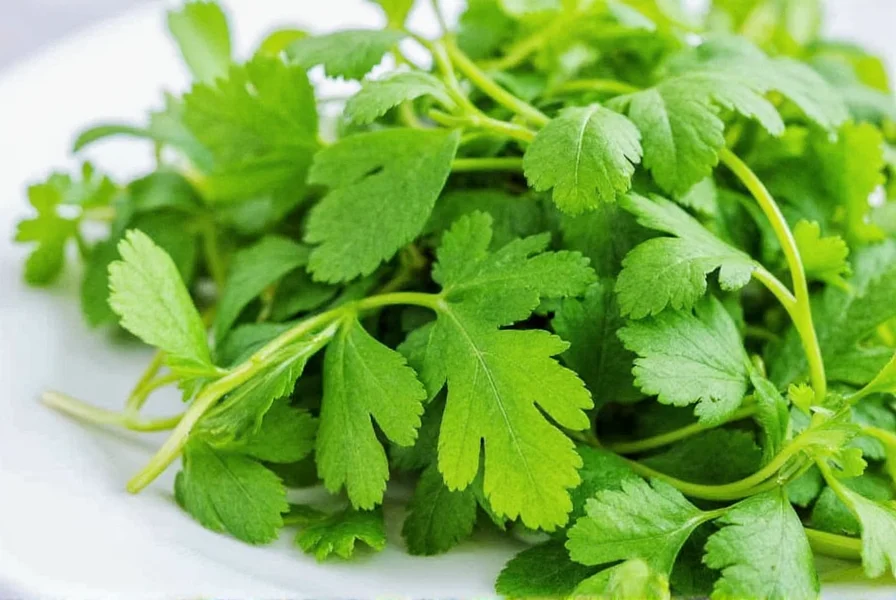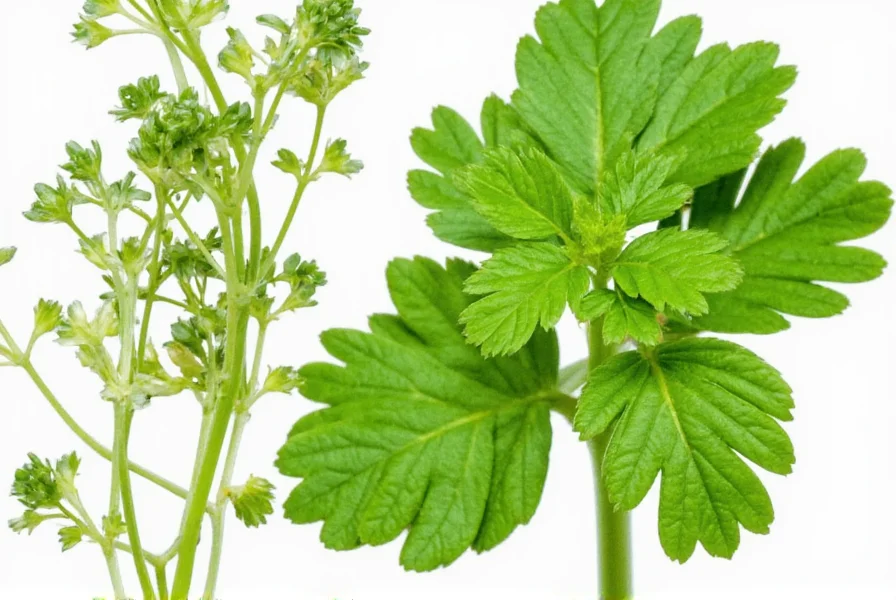Coriander and cilantro refer to the same plant (Coriandrum sativum). The difference is purely regional terminology: "cilantro" describes the fresh leaves in American English, while "coriander" is used globally for both leaves and seeds. In British English, "coriander" refers to the leaves, and "coriander seeds" specify the dried fruit.
Understanding the coriander or cilantro distinction solves countless kitchen frustrations. This aromatic herb ranks among the most polarizing ingredients worldwide, with genetic factors determining whether people perceive it as citrusy-fresh or soapy. Regardless of your sensory experience, knowing the terminology prevents recipe mishaps across international cookbooks.
Botanical Identity: One Plant, Two Names
The confusion stems from linguistic evolution rather than botanical differences. Coriandrum sativum produces both the fresh green leaves (called cilantro in the Americas) and the round beige seeds (known as coriander seeds everywhere). The plant's entire lifecycle offers culinary value:
| Plant Part | American English | British/Commonwealth English | Scientific Term |
|---|---|---|---|
| Fresh leaves/stems | Cilantro | Coriander (fresh) | Coriandrum sativum foliage |
| Dried seeds | Coriander seeds | Coriander | Coriandrum sativum fruit |
| Roots | Coriander root | Coriander root | Coriandrum sativum root |
Linguistic Origins of the Terminology Divide
The word "coriander" entered English through Latin coriandrum and Greek koriannon, possibly referencing bedbugs due to the unripe seeds' scent. Spanish colonists adapted this as "cilantro," which became standard in the Americas. British English retained "coriander" for all forms, creating the transatlantic divide.
When examining international recipes, note these critical distinctions:
- "Add cilantro" in Mexican or American recipes = fresh leaves
- "Sprinkle coriander" in British recipes = usually fresh leaves
- "Ground coriander" anywhere = always the dried seeds
Practical Cooking Implications
Substituting incorrectly can dramatically alter dish outcomes. Cilantro leaves provide bright, citrusy notes in salsas and curries, while coriander seeds offer warm, nutty flavors in spice blends. Understanding coriander vs cilantro meaning prevents culinary disasters when following global recipes.
For American cooks using British cookbooks, "coriander" means the fresh herb unless specified as "seeds." Conversely, British cooks encountering "cilantro" in American recipes should use fresh coriander leaves. This regional terminology awareness proves essential for authentic flavor replication.

Global Usage Patterns
The terminology split follows colonial patterns. Former British colonies generally use "coriander" for fresh leaves (India, Australia, South Africa), while Spanish-influenced regions prefer "cilantro" (Mexico, Central America). Canada shows mixed usage due to cultural influences from both linguistic traditions.
Professional chefs increasingly specify "fresh coriander" or "coriander seeds" to avoid confusion in international kitchens. Food media now often includes parenthetical clarifications like "(cilantro)" when targeting global audiences.
Addressing Common Misconceptions
Many believe coriander and cilantro are different plants. This misunderstanding persists because:
- Grocery stores often list them separately
- Cooking shows rarely explain the terminology difference
- Some non-English languages use completely different terms for leaves vs seeds
Another frequent point of confusion involves culantro (Eryngium foetidum), a different herb sometimes mistakenly called "sawtooth coriander." This tropical plant has longer,锯齿状 leaves and stronger flavor, commonly used in Caribbean and Latin American cuisines.
Maximizing Flavor in Your Cooking
Fresh cilantro (coriander leaves) loses potency quickly when cooked. For optimal flavor:
- Add at the very end of cooking or as garnish
- Store stems in water like cut flowers
- Freeze leaves in oil for longer preservation
Coriander seeds benefit from toasting before grinding, which enhances their citrusy, sage-like notes. Understanding these preparation differences between coriander leaves and seeds elevates dish quality regardless of which term you use.
Frequently Asked Questions
Can I substitute dried coriander for fresh cilantro in recipes?
No, dried coriander (ground seeds) cannot substitute for fresh cilantro leaves. They have completely different flavor profiles. For fresh cilantro replacement, try flat-leaf parsley with a squeeze of lime, or use culantro if available.
Why do some people hate cilantro/coriander?
Genetic variation in olfactory receptor genes causes some people to perceive cilantro's aldehydes as soapy. This affects approximately 21% of East Asians, 17% of Europeans, and 14% of people of African descent, according to genetic studies.
Is there a difference between coriander seeds and cilantro seeds?
No difference exists—they're the same thing. "Cilantro seeds" isn't a standard term; the dried fruit is always called coriander seeds regardless of regional leaf terminology. The plant produces only one type of seed.
How do I grow coriander/cilantro successfully?
Coriander grows best in cool weather with partial sun. Plant seeds directly in soil (they don't transplant well), ¼ inch deep. Harvest leaves when plants reach 6 inches tall. For seed production, allow plants to flower and mature—this takes about 3 months from planting.
Does the coriander/cilantro terminology difference affect nutritional value?
Nutritional content depends on the plant part, not the name. Fresh leaves provide vitamin K and C, while seeds contain more fiber and minerals like iron. The terminology difference doesn't change the actual nutritional profile of each component.











 浙公网安备
33010002000092号
浙公网安备
33010002000092号 浙B2-20120091-4
浙B2-20120091-4